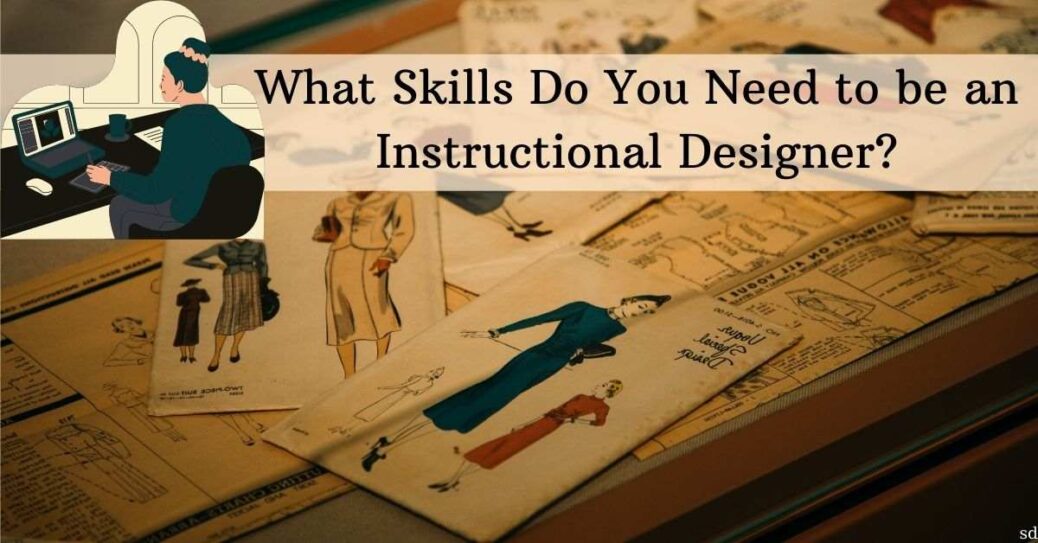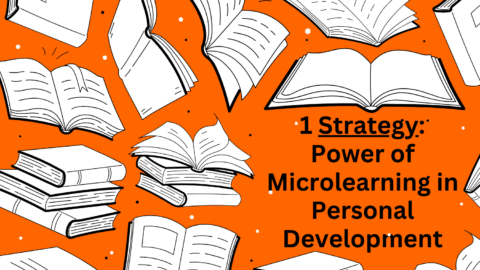What Skills do You Need to Be an Instructional Designer?
Instructional design is the study of creating opportunities for growth that help people gain the skills they require. The goal of the instructional designer is to identify knowledge and expertise differences and find the most effective ways to eliminate them, by creating effective learning content. Instructional designers should be experts in both how people learn and how to create content using technology. They should be able to use multiple learning styles to create and convey engaging learning materials, making planning quicker, simpler, and more feasible. What are instructional design course and instructional design jobs? Let’s look at in details.
Table of Contents
An Instructional Design Certification Course designer is in charge of creating opportunities for skill development as well as convincing content that meets requirements. Connecting with experts to gather data based on the students’ needs. Making online courses for learning and skill development using a creation tool, as well as creating tests and tasks for performing information checks and assessing preparation adequacy. Creating supporting materials that incorporate a variety of media, including sound, video, screencasts, and gaming.
1. Creative Thinking Ability for Becoming Instructional Designer
Designing learning content requires a great deal of creativity because the result should be remarkable and provide individuals with an incredible opportunity for growth. The ability to think about something in a new way is referred to as innovative reasoning. It very well could be a new approach. Instructional designers in various disciplines require the audience to bring new points of view.
Thinking about new ideas is an example of imaginative reasoning. Horizontal reasoning, or the ability to see designs that are not self-evident, is frequently associated with innovativeness. Imaginative reasoning could imply devising better ways to complete tasks, deal with issues, and solve problems. It entails bringing a fresh, and occasionally unconventional, perspective to your work. This viewpoint can help divisions and associations become more effective.
2. Knowledge of Learning Styles
The individual learning assumption proposes that the trainees learn best when data is presented to them with a specific goal in mind the suitability of the learning style, its popularity today makes it a subject worth focusing on – particularly if a portion of trainees are having a difficult time holding data while advancing from a distance.
Individual learning styles are critical to consider, as your striving trainees will require courses that are interestingly presented to them to truly retain the material.
The four learning styles that can help a person create effective learning content and are visuals, aural, writing, kinesthetic
Visuals: Visuals are better prepared to hold data when it is presented to them in a realistic manner, such as graphs, outlines, images, and so on. Visuals are given trainees to thrive with clear images of data progressive systems, just as designers use visual pecking order to emphasize clear and specific design components.
Aural: Trainees who can hear, are more likely to pay attention to the information presented to them verbally. These students perform admirably in social situations where vocal coordinated effort is available, and they may also enjoy reading aloud to themselves.
Read/Write: With a focus on the written content, reading and writing trainees excel with written data on worksheets, introductions, and other text-heavy assets.
Kinesthetic: Kinesthetic learners are hands-on and thrive when they engage all of their senses during coursework, taking on a physically active role. Because of the course’s practical learning research facility element, these students perform well in scientific studies.
3. Content Development Skills
The ability to select, sequence, and carry out instructional tasks to achieve a specific learning result is a fundamental skill for instructional designers. It has been established that when content info is weak, learning results are weak, whereas when content information is strong, learning results are more grounded. In general, instructional designers’ content development can distinguish between viable and inadequate in terms of the learning experience.
To develop productive course content, you must collaborate with Subject Matter Experts (SMEs). They will share their knowledge and necessary skills with you, such as PowerPoint introductions, moderator notes, reference reports, internet resources, test questions, and so on. It is your responsibility to investigate these sources and create content that is short, clear, brief, and engaging. Each learning objective should be given data, case studies, real-world models or situations, and a link to additional learning resources on the subject.
4. Research
Research skills are necessary for instructional designer jobs because they help the user trainees in gaining appropriate learning experience. The exploration into clear and specific courses assists instructional designers in delivering an accurate course, pleased to recognize the needs and requirements of the training, further develop what they do, and stay aware of changes in their industry. Knowing how to foster great exploration abilities and highlight them for trainees can help you in a variety of ways throughout the learning process.
The process of research includes the following components: Looking for information, paying close attention to detail, Taking notes, presenting information, and you can improve your research skills by
-
creating a blueprint
-
Be aware of your sources
-
Learn to use advanced search methods by practicing nonstop.
5. Knowledge of tools and techniques used in instructional design
Technology does play a most important role in the development of various domains and it also showed its magic in the field of instructional design. There are many tools and techniques which help instructional designers to make effective learning content and these are a few software which is used by instructional designers Adobe Captivate, iSpring Suite, Articulate Storyline, Robohelp, Movavi Video Editor, Canvas, CloudApp, Camtasia, ShareX, etc.
Traditional methods are fundamentally focused on essential media and message, that is less understandable. There may be a few recordings as well, but the majority of them are uneven and focus on how the representative follows up on the data passed.
As the demand for successful noteworthy training has grown, organizations have begun to create content that is more interactive and encourages trainees to participate. liveliness, intellectual instructional videos, tests, overviews, comments on recordings, and a variety of other features are included.
6. Flexibility
To become a skilled instructional designer in any instructional designer jobs, you must be adaptable and plan learning content based on the learner’s needs and prerequisites. There will be consistent changes in the content. If you are planning on designing a specific course and you truly want to adjust the progressions, you need to refresh them consistently to give learners or trainees a phenomenal development opportunity.
Instructional Designers must be adaptable because course content does not always go as planned. Being adaptable demonstrates that an individual understands that Instructional Design jobs are not a precise science and that one should be able to flex his experience on various tasks to keep them moving forward while maintaining a pleasant demeanor.
7. Time Management Skills
Any instructional designer’s main perspective is time management. Any course must be completed within a specific time frame. This aids people in obtaining information. The less time an individual has to work on their productivity, the better. A lack of time management skills may cause you to be unprepared to comprehend the learner, the unrivaled, you will most likely be unable to coordinate yourself appropriately, you may be late, you will handle your venture turbulently, and so on.
This is, for the most part, the reason why you should constantly work on improving your time management skills. Because it will enable you to manage your content more profitably, with higher quality, and in less time, and it will also enable you to have more available energy. Also, your anxiety will be significantly reduced as a result of expert craftsmanship and unmistakable harmony between work and personal life.
8. Knowledge of Learning Models
As we realize that mastering a specific ability is a complicated cycle. To create effective learning content, an instructional designer should be well-versed in a variety of learning models. A learning model is any method of acquiring new knowledge or skills. This profound unique characteristic can be put to good use in the long run if you can effectively break it. The learning model assists an instructional designer in creating content and understanding each student’s needs.
Some of the learning models mentioned for your reference are VARK Learning Style Model, Hermann Brain Dominance, Gregorc Learning Model, Felder-Silverman Learning Style Model, Honey Mumford Model, 4MAT Learning Model, etc.
9. Promote Curiosity Among Learners
The instructional designer must-have the skill to promote curiosity among learners through their content. The desire to understand or learn something. The desire to see things in ways that others are unlikely to see. These passions can lead to new opportunities for growth.
The ability have an interest is an important characteristic for learners to have. Intellectually curious people have a strong desire to understand, which they frequently demonstrate by seeking clarification on pressing issues.
They must investigate all of the possible outcomes that can result from a single thought. Curious personalities will want to make arrangements that appear to be unusual and incredible, but work similarly to or better than the standard arrangements for issues that are generally addressed with standard techniques.
10. Analytical Ability
The instructional designers must possess the analytical ability to understand whether their content is reaching their target audience or not. How the course content is helping them to develop their skills and calculate the outcome accurately.
ADDIE (Analysis, Design, Develop, Implement, and Evaluate) design is the commonly used instructional plan model, and it includes four tasks: characterize instructional objectives, decide steps to accomplish such objectives, distinguish students’ entry information and qualities, and articulate the skills, perspectives, and information students should have by the end of the instructional experience.
Noting the “who, what, where, when, why, and by whom” is a basic method for investigating while arranging guidance. Some information is predictable, such as requirements and enlistment covers. In any case, set aside some time to report all of the data so you can refer to it when making course plan decisions.
How to Find Instructional Designer Jobs?
If you want to become a skilled instructional designer, you’re probably wondering if you’re qualified to do so. As an instructional designer, you’re always learning new things. You’re dominating innovation, learning about new businesses, or delving deeply into a well-informed authority’s mastery.
You then use this knowledge and ability to plan and foster opportunities for growth that assist individuals in better taking care of their responsibilities or gain some new useful knowledge all the more productively and really. Thus, if you enjoy writing, working with technology, interacting with people, and assisting people with their learning, then the instructional design is likely good for you.
Furthermore, I am drilling down steps to seek after a career in the instructional plan. First and foremost, you should enroll in a short or long-term course from a well-known institution or college.
-
Learn about the eLearning advancement specialized skills.
-
Understand the visual planning
-
Create your profile to promote learning.
-
Keep in touch with other instructional designers
-
Maintain your appropriate curriculum
-
explore job opportunities on social media or any recruitment sources
-
Maintain appropriate curriculum
Conclusion: Becoming Instructional Designer
With the assistance of instructional design experts, It is not difficult to obtain data. However, there is a distinction between obtaining information and comprehending it in such a way that it helps you improve at your specific instructional design jobs.
When you learn something on your own, with little to no guidance, you expend a lot of energy filtering through superfluous data. Couldn’t it be simpler if someone did that for you, allowing you to skip ahead to the important stuff? Instructional designers help to smooth out and structure data so that it is easy to learn and integrate into your daily life.
If you’re enthusiastic about assisting others to learn as an instructional designer, it’s critical to first invest in your education. The majority of instructional designers have a bachelor’s or graduate degree. Furthermore, their education does not stop there; instructional designers are constantly updating their skills to stay current with the most recent innovations and learning hypotheses.
FAQs on Instructional Designer
Q1. Is it worth taking up an Instructional Design Course for Instructional design jobs?
Ans. Yes, you can make a career out of overseeing learners’ online learning experiences. Some people do extremely well financially in the public sector or in consulting. It’s a valuable skill set, especially given what’s going on with the pandemic.
Q2. What is the annual income of an instructional designer?
Ans. You can expect to earn between £25,000 and £35,000 per year.
Q3. What is the minimum qualification to pursue an instructional design course?
Ans. To become an instructional designer, you can study any subject at the +2 level. Pursue a bachelor’s degree in any subject. Degree programs last three years. Pursue a Master’s degree in instructional design for one to two years.
Q4. Can individuals without technical background apply for the instructional design course and find instructional design jobs afterwards?
Ans. Yes, one can apply for this course without any technical background.
Q5. How much does it cost to take up a course in Instructional design?
Ans. The course fee varies from $1500 to $1200.
Q6. What is the period to pursue an instructional design course?
Ans. The course time varies from 1 year to 3 years.











Clinical SAS Training Course is a course in which the candidates learns to design the software for managing the data, restoring the data and to make changes into the existing data.
Benefits of SAP SD Implementation:
Improved Customer Satisfaction:
By providing a 360-degree view of customer interactions, SAP SD enables organizations to deliver personalized services and respond promptly to customer inquiries. This leads to higher customer satisfaction and loyalty.
Streamlined Order-to-Cash Processes:
SAP SD optimizes order processing, from order creation to payment receipt. This streamlining of order-to-cash processes reduces manual efforts, minimizes errors, and accelerates the cash conversion cycle.
Enhanced Visibility and Analytics:
The module offers real-time visibility into sales data, order status, and inventory levels. This visibility empowers organizations with actionable insights, enabling them to make informed decisions, forecast demand accurately, and identify areas for improvement.
Increased Operational Efficiency:
SAP SD automates and integrates key sales and distribution processes, reducing manual interventions and enhancing overall operational efficiency. This efficiency allows organizations to focus on strategic initiatives rather than routine tasks.
Conclusion:
In conclusion, SAP SD stands as a linchpin for organizations aiming to excel in sales and distribution management. By leveraging its powerful functionalities, businesses can streamline processes, boost customer satisfaction, and gain a competitive edge in the market. As organizations navigate the complexities of the modern business landscape, embracing SAP SD is a strategic move towards achieving sales excellence, fostering customer loyalty, and driving sustainable growth.
Nice Article!
Thanks for sharing with us 🙂
UCAT Coaching